Self-proclaimed “winged knight of heavy metal” talks to FBPO about his experiences with KISS, Steeler, W.A.S.P. and much more!
Exclusive interview with FBPO’s Jon Liebman
June 16, 2014
Rik Fox is a rock bass veteran. His decades-long career includes stints with W.A.S.P., Steeler, SIN and several other hard-core rock and metal acts. Fox has also performed with Ronnie James Dio, Randy Castillo (Ozzy Osbourne), Mark St. John (KISS), Max Weinberg (Bruce Springsteen) and many other music luminaries.
FBPO: How would you describe your musical upbringing?
RF: “Street Player” all the way. I guess I get some of it from my late father, Leonard J. Suligowski. When he got out of the U.S. Navy after the Korean War, he used his G.I. Bill to pay his way into broadcasting school. Right before he graduated, somebody walked into the classroom from CBS Radio and asked, “Who wants to start right now?”He raised his hand and, eventually, he created his own jazz show on WGBB in Freeport, Long Island, and interviewed a lot of big stars from that era. There was always jazz and big band and swing music being played around the house. I say “street player” because we could never afford any formal music lessons. I picked up everything by ear and played along to my albums down in the basement. My father said he saw it coming! [Laughs]
FBPO: How did you become a bass player?
RF: I think “Why?” is probably closer to the question! [Laughs]. In the decades before there was an MTV, around 1967-68, there used to be a program on late-night TV called The Now Explosion. It was, literally, the first MTV-styled format of music put to all kinds of artistic videos and such. Eventually, I saw Steppenwolf on TV and to me, the bassist, Nick St. Nicholas, was the epitome of “cool” in his fringed buckskin jacket, leather pants and white Rickenbacker 4001. That was probably my very first rock impression that pushed me over the edge and “down the rabbit hole.” I was taken to the Sam Ash music store in Hempstead, Long Island, and bought a cheap beginner bass and a small amp. That’s how it all began, practicing to my albums down the basement in Brooklyn, having no technical idea what chords or notes were. It was all guesswork to my 13-year-old ears. My very first rock concert was in 1970 or ’71, seeing Grand Funk Railroad at Shea Stadium, with Humble Pie as the opener. It really was a game-changer for me.
FBPO: Other than Nick St. Nicholas, who were your bass influences once your first discovered the instrument?
RF: After Nick, it became a myriad of bassists, like Dennis Dunaway of Alice Cooper, Gary Thain of Uriah Heep, (Pete) Overend Watts of Mott the Hoople, Jimmy Lea of Slade, Pete Way of UFO and, of course, Gene Simmons of KISS. Really diversified styles. The years 1968 to 1974 were intensely formative years for me, musically. I was like a sponge, absorbing everything I heard. I listened to a lot of albums in my collection. I listened a lot to WNEW-FM radio and learned a lot from the artists I heard, including Traffic, Emerson, Lake & Palmer and King Crimson. Lots of progressive stuff. When Steppenwolf changed bassists again, I fell in love with bassist George Biondo’s style. He had a groove and feel that was second to none. In fact, I’m basically a pick-player, but when I play along to the material from the Steppenwolf 7 album, I use my fingers like George does. I would love to have a Steppenwolf tribute band, or Uriah Heep.
FBPO: Tell me about the Martian Rock Band. Wasn’t that your first band?
RF: Yes. Around early 1975, while working as a messenger in midtown Manhattan, I met a girl who introduced me to the legendary club Max’s Kansas City. She began introducing me to all the eventual legends of that music scene, including the bandleader Sebastian – then called “Sebi” – of the Martian RockBand. Apparently, I had “the look,” whatever that was back then. [Laughs] While meeting at Max’s one night, as we watched a then-backup singer named Debby Harry in another band, we talked about me replacing their current bassist, so I was given the opportunity to try out for the Martian Rock Band. I wasn’t what you’d call an adept or well-rounded player, as I was still learning. Fortunately, in addition to some of the more aggressive punk elements of the songs, some of the material was “borrowed liberally” from classic ’50s-style arrangements, so I was able to pick it all up pretty fast. We were part space rock, part punk. Sebi referred to it as “Spunk.” [Laughs] We were like the East Coast parallel to the West Coast’s Zolar X band.
FBPO: How did your career get rolling after that?
RF: While working in a clothing store a few doors down from the legendary Electric Lady Studios in Manhattan’s West Village, I met a guy who played second guitar in a New Jersey club circuit glam band called VIRGIN. The lead guitarist wasn’t that impressed with me, but the singer told him, “I want this guy in the band, so work with him and teach him,” which really made a difference. I learned my bass that way, as a “street player,” without formal lessons. Now, I was playing out in that Jersey club circuit with a band that did mostly covers of Alice Cooper – complete with an 8-foot boa snake! – Bowie, Mott, KISS, Queen, etc., and a few originals. Full glam to the wall: 8-inch platform boots, English glam band looks, etc. I did that from about 1976 to 1979. I was blown away by the band ANGEL when I saw their picture on their Helluva Band album and after I saw them in concert several times. That was another game-changer. I created my own version of an Angel costume, all in white, and I went from looking like bassist Mickey Jones to guitarist Punky Meadows. Everybody knew me from that look, including the band members themselves! [Laughs]
FBPO: I understand you had a connection with KISS, way back at the beginning.
RF: Correct. While still in high school, around 1972, PeterCriss’ family had moved into an apartment around the corner from me in Greenpoint, Brooklyn, and eventually I began dating one of his sisters. I met Peter right after his band, Chelsea, broke up and he was looking for another band. That’s when he submitted his now-famous ad in Rolling Stone magazine and was picked up by Gene Simmons and Paul Stanley, then-from Wicked Lester. They began rehearsing together as a trio. I used to go into Manhattan to their rehearsal loft with two of Peter’s sisters and some other friends from the neighborhood and watch them practice. Sometimes Peter would pick us up on the way and drive us in. Eventually, Ace Frehley got the guitarist spot and KISS was born. I witnessed it all unfolding, right before me. It was pure magic. I was interviewed about it in Ken Sharp’s latest book, Nothin’ to Lose: The Making of KISS (1972-1975). Some of my early KISS photos are in there too from the Coventry and what was formerly The Fillmore East Press show. They left a huge impression on me.
FBPO: You’ve been credited with coming up the name for W.A.S.P. How did that happen?
RF: Well, that credit wasn’t recognized for decades and, to this day, remains dismissed and denied by the band’s leader and only remaining founding member, Blackie Lawless. Because of social media, W.A.S.P. fans around the world are already in the know about this “cloudy” era of the band’s early origins. The story’s details, much like the game “Telephone,” changes from reader to reader so, once again, here is the actual story:
In February of 1982, after arriving in LA after an invitation from Blackie Lawless to audition for his band Sister, I got the gig and became their new bassist. We recorded a famous demo, consisting of about a half-dozen of the songs that wound up on the first album. Blackie told me how happy he was with how the demo turned out and that he was glad that their search for a bassist was over.
While taking a phone call in the courtyard outside of Blackie’s rented cottage house, I kicked over a leaf and saw a hornet there on the ground and immediately stepped on it. As it lay there curled and dying, the stinger kept moving and it reminded me of the old logo for The Green Hornet television show. What else is a hornet known as except for a wasp? I went into the house and told Blackie of my epiphany for a new band name, WASP, which he immediately dug. That night at rehearsal, he announced that the band had a new name. That is how I created the band’s name.
After I was discharged from the band, Blackie changed the name, added the periods and tried to forbid me from owning any proof that I was ever in the band. All this has been validated by the other original founding band members, but as of yet, still continues to be dismissed by Lawless himself, which is already quite ridiculous at this point because the entire world already knows.
FBPO: Tell me about your experience with Steeler.
RF: The defining moment that put me “on the map” in Los Angeles! I was still relatively new in LA, trying to meet new people and make new friends. I had put an ad in the local Music Connection magazine’s classifieds and got a call from the Ron Keel, the bandleader of a Steeler, whom I had recently seen at the Roxy with my good friend, the late KISS drummer, Eric Carr. The band was still new and highly impressive with their overall stage performance. Ron had a voice that was amazing! So, out of the blue, Ron contacted me and said, “Your ad looked the most professional of all the bassists and I wanted to meet and talk to you about replacing my current bassist.”
Ron took a friggin’ huge leap of faith, starting over with nothing but the awesome Steeler reputation, which was now on the line. Ron told me that once they’d arrived in L.A., he saw what kind of competition he was up against and needed new members who would make rising above and beyond that competition possible. Once again I was told that I had that perfect “rock star look” and that was a large part of what he wanted for his new line-up: guys who looked larger-than-life, arena-level-looking performers. Ron gave me a demo tape and said, “Learn these songs and call me. We’ll talk more from there.” So I did and, upon the return of their new drummer, Mark Edwards, from Texas, we began rehearsing as a three-piece.
Steeler’s material was not rocket science. There were no complex orchestrated intricacies. It was straight-ahead, basic chording, heavy metal rock, so I didn’t need to pull out any abstract bass lines. Mark and I rehearsed, just as a rhythm section, for a few hours every day, getting as tight as the gear wheels in a well-oiled machine. I harkened back to what Peter Criss told me about that concept back in 1972 and that same precision he had with his drummer in Chelsea.
Eventually, through Shrapnel Records producer and founder Mike Varney, we added a young and arrogant Swedish prodigy by the name of Yngwie “J” Malmsteen. At first, it wasn’t working because Yngwie saw fit to insult Ron to his face by requesting to make the songs a little less simple and a little more complex to come up to his playing standards. We couldn’t believe what we were hearing from this “new” guy! We kept auditioning other guitarists right in front of him because we all lived together in a piss-poor environment of several gutted-out, roach-infested storefronts, laughingly dubbed “The Steeler Mansion.” Eventually, Yngwie came around and said, “Okay, I’ll play the game your way.”
We rehearsed as a team and got so tight you couldn’t slip a piece of paper in between any cracks – if you could find any! [Laughs] We recorded that now-legendary album that has the prestige of being the largest-selling, independently-released metal rock album of all time, according to the RIAA, and we were riding a very fortuitous tide, getting choice gigs supporting majors like Hughes/Thrall, Vandenberg and Quiet Riot, while headlining all other shows. The lines went out the doors, down the block and around the corner. Steeler was now performing to fully-packed concert venues and I believe that Ron had finally gotten what he was looking for by way of an all-star super band that could not only compete with, but also rise above, most of the other LA rock and metal bands on the scene in 1983.
Today, Steeler is more popular than we were back in 1983. The fans are all demanding some kind of reunion and I agree with them. I think Yngwie believes that it would be a step backwards for him and doesn’t care what the fans think. Unbelievably, I was informed that while That Metal Show had Yngwie on as a guest, conversely, they turned down an offer to have the entire Steeler band and producer Mike Varney on as guests! And host Eddie Trunk boasts that Steeler is one of his favorite metal bands of all time. I’m shaking my head over that one.
FBPO: SIN was a pretty significant part of your career too.
RF: Absolutely! Having come right from Steeler and not wanting to lose any momentum, I made the mistake of not properly screening potential members while still learning who my friends were – and were not. Now that I was extremely popular and had built quite a large following, that would translate to big box office draws. As the catalyst, I came across several other band members and put together a new band, based on my ability to draw and headline a club without having to be subjected to the opening band position.
I suggested using the name of my old band from New Jersey, SIN, which was met with a lukewarm response. However, since no other suitable band name was forthcoming from anyone else, we decided to use the name SIN. And, because of my ability from Steeler to open the right doors, we headlined our first show at the legendary Troubadour Club, which drew anybody and everybody in town who was famous, from Yngwie himself to the members of Mӧtley Crüe, RATT, even David Lee Roth.
Show after show was proving to be a winner. We recorded a single I wrote called “On the Run” for Azra Records on a now-collectors’ item, a snake-shaped picture disc. Unfortunately, within six months of creation, the egos really got out of hand and the band members conspired to, figuratively-speaking, cut off their head, kick me out and steal the band name from under me. Meanwhile, I had created the band’s entire look and imagery, as well as written or co-written most of the songs. The lead singer made the fatal mistake of publicly announcing their plans to fire me and steal the band name, which led to a huge war over the band’s name between us in the clubs.
Eventually, after creating a superior second line-up consisting largely of the ex-members of the New York band Alien, SIN imploded and it became like sand through my fingers as I watched everything I had worked for up to that point go through my hands. I returned to Los Angeles after watching the Surgical Steel project, a band I recorded an album and performed with in Arizona, also dissolve, and I formed Thunderball. I created a new band and image, recorded a great demo and did a few awesome shows. Then Seattle kicked down the door to our type of music and the entire scene changed, with the ’90s paving the way for flannel shirts, baggy shorts, combat boots, dirty, stringy hair and beards and depressing songs about heroin. The era of the “rock god” was dead. The bands now looked like the road crews.
FBPO: I noticed Sam Kinison’s name on the list of artists with whom you’ve performed. What’s that all about?
RF: About a year or so after Sam released his hit remake of “Wild Thing” and shot a video with a whole slew of famous rockers, he would, on occasion, perform it live with whomever was on hand to join him onstage. In this case, Sam was performing at the China Club in Hollywood. I got a phone call from Ken Rubin, who was managing my band Thunderball. He said, “If you want to jam with Sam Kinison, get down here right away to the China Club!” So I got down there as fast as I could, I met Sam and came to discover that Dio’s bassist, Jimmy Bain, had somehow inserted himself into my spot and was now playing onstage during the set which was originally promised to me. Just as Sam is announcing “Wild Thing,” the bass tech sees me standing there with my bass. He pulls Jimmy to the side of the stage, pulls his plug out of his bass, plugs me in and yells, “Go!” and pushes me out onstage, leaving a bewildered and very inebriated Bain wondering, “What happened?”
I found myself onstage, among some of the biggest legends: producer Jean Beauvior, “Little Steven” Van Zant, my friend, the late Ozzy Osbourne drummer Randy Castillo, Jimi Hendrix impressionist Randy Hansen and a very intoxicated Roseanne TV star, John Goodman, on blues harp! Sam was an awesome performer to work with. I have a photo of us together backstage.
FBPO: What’s keeping you busy these days?
RF: I left performing in the early 1990s and began working in the film industry as a Prop Master and weapons-handler. After that, I served five years in the California State Military Reserve as a communications NCO, rank of E-4, before jumping back into theatrical performing at Renaissance Fairs. Eventually, through my late father’s influence, I created and introduced the first officially recognized representation in the American mainstream of the 17th century Polish Winged Hussar knights’ cavalry of my noble ancestry. Our living history re-enactment group, Suligowski’s Regiment of Sobieski’s Hussars, educates people about a largely unknown – in America – historic legacy that was one of the most formidable and flamboyant cavalry fighting units of Central European history. These winged knights saved Christian Europe from Ottoman Turkish Islamic enslavement at the Battle of Vienna in 1683 with the largest cavalry formation in European History. I also made U.S. history by being the first representative of the hussars in the 2002 NYC Pulaski Parade. My late father, as well as all the Polish re-enactors over in Poland, were all very proud of what I had been able to achieve in raising Polish historic awareness and culture here in America.
On top of all that, I have been making a comeback into performing. I’ve reunited with my Steeler band mate Ron Keel and we gave a knock-out performance of two Steeler songs at the Whisky a Go Go club in Hollywood in June of 2013 to a heartwarming cheering crowd, followed by several cancer charity benefit concerts with all-star lineups.
Recently, after recording on their upcoming album, The Year of the Snake, I was invited to perform several shows withSpiders and Snakes, including the recent “Rockers Against Trafficking” benefit, where we helped raise some $10,000. I look forward to the next gig with great eagerness!
FBPO: What kind of equipment are you using?
RF: I still use my 1975 “sea foam green” Gibson EB-3 because I’ve always been a fan of my late friend, Mountain’s Felix Pappalardi. I also have my Aria Pro-II Custom ZZB Blood Bass, which is a big hit with my fans for some reason. [Laughs] Another hit with the fans is my 1987 multi-colored, black-crackled Custom B.C. Rich Warlock bass. Currently, I’m so loving my tobacco-colored Epiphone Thunderbird bass! In my heart of hearts, I’ve always wanted a Gibson Thunderbird bass in white, like Mott the Hoople’s Overend Watts had, but I was informed that Japan bought out the entire market of Epiphone’s white Thunderbird basses, with no plans to release any in the U.S., which really pissed me off!
I’m happy to announce that I have re-signed a new endorsement deal with GHS Strings. I’m currently using the medium bass “Boomers.” I really love them. For amplification, I have been endorsing Randall bass amplifiers since 1983-84. I still have my two rack mount Randall RBA-500 heads and two Marshall-sized stacks of four 2 x 15 bass cabinets with custom grills after all these years! I’m endorsing Dunlop custom bass picks and have been using the same custom-made cables since the ’80s. I use both DiMarzio and EMG bass pickups. I built my own rack too, by the way.
I’m also looking to get back into a few FX pedals, like a nice stereo chorus and flanger, and I’d like to find something that can recreate that “monster roar” accomplished by Manowar’s Joey Dimao at the intro of the song “Dark Avenger” from their Battle Hymns album.
FBPO: How about the future? What else would you like to do that you haven’t already accomplished?
RF: I’m writing a book about my “adventures,” as there are a lot of memories to recall and tell. I name a few names and expose a few bad guys in it too! [Laughs] It’s going to be a big read! I also have plans to release a Rik Fox Anthology package of songs and DVD footage. The fans are always reminding me how much they want it, so I’m grateful for that.
I’m grateful for any and every opportunity that comes my way. I’ve always felt like a small figure that walked in the massive shadow of the late Ronnie James Dio and I aspire to the greatness that was his, as well as his treatment of his fans and his general outlook in life. I considered Ronnie a mentor and a fantastic teacher to learn from.
I’ve enjoyed being ambitious and striving to achieve what little I have managed to accomplish, in comparison to others around me. Some people have chosen to take issue with that, but that’s their problem. If I’ve made a positive difference in the life of just one person, whether it be through music or history, then I know I’ve done my job here and I can take that with me and nobody can take it from me. Multiply that and I know there’s a place for me somewhere in heaven. With that, there’s still a road ahead of me to blaze.
FBPO: What would you be if you weren’t a bass player?
RF: Inevitably, probably a troublemaker, upsetting somebody’s apple cart somewhere! [Laughs] I seem to be good at that!
I really don’t know. I feel that I was destined for some kind of greatness and making some kind of positive impact on this world, so I guess the genetic DNA markers took over with fate and steered me in the right direction from there. I am interested in emergency management though. I’m a student of war in history and strategic thinking. Maybe a historian or teacher of some kind perhaps? Naww! I’m an educated rocker through and through!
Thanks for having me! And continued success with your awesome For Bass Players Only programs. Cheers!
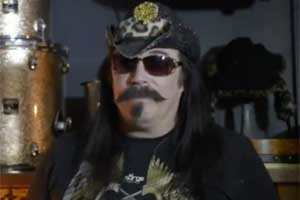
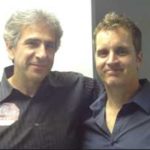
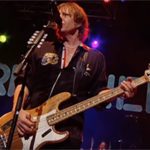
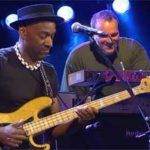
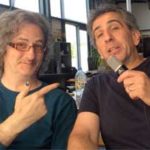



One of the “GOOD GUYS” from the 80’s man.
\m/><\m/.